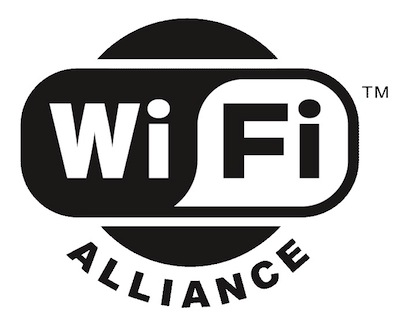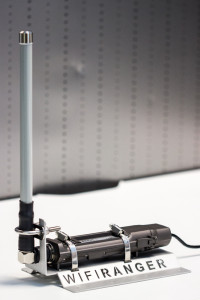 The Wi-Fi Alliance today officially debuted "Wi-Fi HaLow" - a new Wi-Fi standard for "low power, long range Wi-Fi" that aims to double the range of existing Wi-Fi technologies - while being vastly more power efficient too!
The Wi-Fi Alliance today officially debuted "Wi-Fi HaLow" - a new Wi-Fi standard for "low power, long range Wi-Fi" that aims to double the range of existing Wi-Fi technologies - while being vastly more power efficient too!
But don't get too excited about better campground Wi-Fi just yet - the target for this technology is low-speed connections to "sensors and wearables" - not high-speed connections to computers and smart devices.
And by low speed... Think dial-up modem!
Table of Contents
HaLow = 802.11ah
"HaLow" is the friendly name for the IEEE 802.11ah protocol, a new variant of Wi-Fi that uses the unlicensed 900MHz spectrum that older generation cordless phones operate on. This low-frequency spectrum can travel further through the air, and is much better at penetrating walls and other obstructions than the high-frequency 2.4GHz & 5GHz bands used by current Wi-Fi standards.
But the downside of this range is extremely limited speeds.
The 802.11ah standard in the USA will enable 26 communication channels, with a single channel able to provide just 150kbps throughput. That is barely faster than old dial-up modems, and is not at all suitable for even the most basic web surfing on today's smart devices.
Though some HaLow devices may be able to bond multiple channels for faster speeds - speed isn't really the goal with HaLow.
HaLow isn't meant for people to get online - it is aiming to be a core enabling technology for the Internet of Things (IoT).
HaLow is intended to connect devices like thermostats and garage doors and home automation gear and various other remote sensors. HaLow is aiming to enable full-house coverage, penetrating into places Wi-Fi was previously hard to get - like attics, garages, basements, and yards.
And because HaLow is so power efficient - even small battery powered devices will be able to stay connected for months on end. In this regard HaLow is more of a competitor for Bluetooth (only with much longer range) than it is for current Wi-Fi technologies.
How Long Until HaLow?

Because HaLow is a part of the 802.11 family of Wi-Fi technology standards, future home Wi-Fi routers will likely eventually begin to incorporate HaLow support.
But as of today, there are no actual products supporting HaLow announced - and since the standard is so new the Wi-Fi Alliance is not even expecting to begin certifying HaLow-compatible devices until 2018, though some products may manage to ship sooner.
And while HaLow may end up being a great technology for home automation - it will likely not prove to be significant for use in RVs, where the range from one end of the house to the other is not much of an issue.
Future Wi-Fi Technologies to Watch

The current 2.4GHz Wi-Fi standards (802.11b,g,n) deliver decent speeds over moderate range - and these technologies power almost all public and campground Wi-Fi deployments. But as we all know - speeds drop off rapidly with distance, making public Wi-Fi all too often a frustrating experience.
The 5GHz Wi-Fi standards (802.11a,n,ac) deliver much faster performance with less signal interference from other nearby devices, but 5GHz signals are only useful over a short range. An 802.11ac router can deliver fabulous speeds throughout a small house or within an RV, but as the range increases the router will drop back to 802.11n while continually dialing back the speed.
The upcoming 802.11ad standard (aka WiGig) will use 60GHz microwave spectrum to enable even faster multi-gigabit speeds - but with signals that can only fill a single room, not even penetrating a single wall. The 802.11ad standard will be fast enough to enable wireless external hard-drives and even cordless connections to monitors, but it will do nothing to help with long-range communication.
Further out - 802.11af aims to detect and take advantage of the spectrum from unused TV channels (the static you get as you flip around the dial) to broadcast a Wi-Fi signal that might actually prove to be able to maintain multi-megabit speeds over distances of more than a mile. But the 802.11af standard is only in the proposal phase, and there are a lot of technical and regulatory hurdles that will need to be tackled before this sort of long-range Wi-Fi becomes possible.
In other words - while WiFi will be getting faster in the near future - it will at best be years before substantially longer range WiFi technologies come to market.
Wi-Fi was never intended to be a long range technology - and roof mounted long-range Wi-Fi gear like a WiFiRanger can only do so much to squeeze a few hundred extra meters out of a connection.
Thank goodness that LTE keeps getting better!








 Mobile Internet Resource Center (dba Two Steps Beyond LLC) is founded by Chris & Cherie of
Mobile Internet Resource Center (dba Two Steps Beyond LLC) is founded by Chris & Cherie of